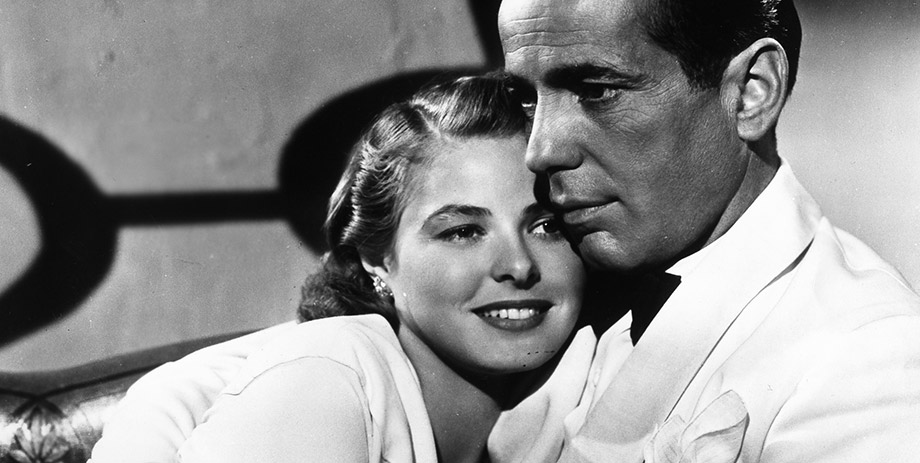
“If you took acting away from me, I’d stop breathing.”
—Ingrid Bergman
My mother accompanied me on a working trip to Los Angeles some years ago. She came to the screening of Isabella Rossellini’s new film and remarked how much “the girl” looked like Ingrid Bergman, her favourite actress. I told her the girl was indeed Bergman’s daughter Isabella Rossellini.
When I interviewed Rossellini the next morning, I told her the story and she came out to find my mother. When she did she embraced her and said “I am the daughter. Are you the mother?”
It was a big moment for my mother. Her admiration of Bergman was a fact of life and source of great pleasure. Whenever her films were broadcast we watched them together on television. There weren’t any art houses where we lived offering retrospectives.
Bergman enjoyed a successful acting career in Sweden but left for Hollywood in 1939 on David O Selznick’s invitation. He’d seen her in the Swedish film Intermezzo and wanted to remake it with her. Selznick was no doubt hoping to repeat the success of another Swede transplant, Greta Garbo.
Like Garbo, Bergman maintained her standards of beauty that set her apart from actresses of the time. She refused to be compromised by the star factory so her high cheekbones, radiant skin and robust figure did what they did naturally, not what was imposed upon them.
Her European outlook gave her a special niche of exoticism, diversity and classicism. Professionally, Bergman welcomed all kinds of roles spanning the social and moral spectrum. A running theme was a woman in desperate circumstances, fearing for her life.
Bergman became an international sensation. She won three Oscars and went on to make 52 films and was one of the Hollywood greats. Her career and personal life often meshed as when her extra marital affair and resulting pregnancy by filmmaker Roberto Rossellini resulted in a moral backlash in America.
They left the US for Europe and over eight years, and made five films together, Stromboli, Europa ’51, Viaggio in Italia, Giovanna d’Arco al rogo, and La Paura (Fear).
She and Rossellini separated; she made another film in Europe then returned to Hollywood and the industry she loved, enjoying a professional rebirth and longevity. She was welcomed with open arms by the industry and the public.
TIFF Bell Lightbox honours Bergman with the Notorious series on the occasion of her 100th birthday. Ironically, she was born in Stockholm, Sweden Aug 29th 1915 and died on the same day in 1982.
Cinematheque’s centenary celebration runs August 22 through September 6th featuring ten of her best loved films.
More info can be found on the TIFF site.
NOTORIOUS: CELEBRATING THE INGRID BERGMAN CENTENARY
Casablanca
dir. Michael Curtiz | USA | 1943 | 102 min. | PG | Digital.
Saturday, August 22 at 1:30 p.m.
Notorious
Alfred Hitchcock | USA | 1946 | 101 min. | PG | 35mm
Sunday, August 23 at 3 p.m.
Spellbound
Alfred Hitchcock | USA | 1945 | 111 min. | PG | 35mm
Thursday, August 27 at 6:30 p.m.
Gaslight
George Cukor | USA | 1944 | 114 min. | PG | 35mm
Saturday, August 29 at 6:30 p.m.
For Whom the Bell Tolls
Sam Wood | USA | 1943 | 168 min. | PG | 35mm
Sunday, August 30 at 1 p.m.
Anastasia
Anatole Litvak | USA | 1956 | 105 min. | PG | Digital
Tuesday, September 1 at 6:30 p.m.
Goodbye Again (Aimez-vous Brahms?)
Anatole Litvak | USA | 1961 | 120 min. | R | 35mm
Thursday, September 3 at 6:30 p.m.
Murder on the Orient Express
Sidney Lumet | USA/UK | 1974 | 128 min. | PG | 35mm
Friday, September 4 at 6:30 p.m.
The Bells of St. Mary’s
Leo McCarey | USA | 1946 | 126 min. | G | 35mm
Saturday, September 5 at 6:30 p.m.
Under Capricorn
Alfred Hitchcock | USA | 1949 | 116 min. | PG | 35mm
Sunday, September 6 at 3:45 p.m.